What Are the Value Drivers for a Business?
Value drivers are an important part of running a small business. We take a closer look at the many value drivers that business owners should consider as part of their business planning.
If you’re like most business owners, your business is your most valuable asset. Improving your business’s value drivers is a key component of running a successful business as well as a foundational element of your eventual exit. By enhancing the many value drivers available, it is possible to increase the worth of your company and its position in the market when you are eventually ready to sell.
We assembled this list of value drivers, explained why they are important, and offered tips on how to improve yours.
5 Categories of Business Value Drivers
Generally, there are five structural categories that value drivers fall under for most businesses. These categories form the foundation for increasing your business’s value. They include:
- Market benchmark
- Investment and business fundamentals
- Financial measurement
- Human capital and next-level management
- Strategic planning
Let’s take a closer look at each category and the types of drivers that assist with each business goal.
Market Benchmark & Measurement
A business’s share of the market, competitive landscape, vendor relationships, and customer base are all important factors that can affect its value.
Market share. A business with a larger market share can sell more products or services and generate more revenue. This generally leads to increased brand awareness, increased bargaining power with suppliers and distributors, and increased innovation through investing in research and development. These new products and services help a business continue feeding the cycle by attracting more new customers and further increasing profits.
Competitive landscape. A better understanding of the market leads to better decisions about pricing, marketing, and other aspects of the business. By reviewing the competitive landscape a business can identify strengths and areas for improvement, understand where there is demand for their products or services, and areas where they can expand.
Supplier and customer relationships. Building strong supplier relationships can help businesses to get better prices, offer better quality goods and services, improve delivery times, and access new technologies and innovations. These strong associations often lead to a competitive advantage and increased customer satisfaction, ultimately leading to repeat business.
Diverse customer base. A diversified customer base helps improve a business’s value in a number of ways:
- Reduced risk. Businesses that rely on a small number of customers are more vulnerable to even the slightest change in their needs or preferences. A diversified customer base spreads that risk across a wider range of customers, making the business less likely to be affected by these changes.
- Increased customer pool. By reaching out to new customers, a business can expand its market share, leading to increased sales.
- Improved innovation. Interacting with a variety of customers means a business can get feedback on new ideas and products. Innovation based on this knowledge places the company in a better position of meeting its customers’ needs.
- Improved resilience. By appealing to a variety of diverse customer bases, if one group declines, the business can still rely on others to generate revenue and help weather economic downturns or other challenges.
Customer feedback capture. Creating a system to collect and use customer feedback can help a business identify ways to improve products and services, customer service, and even marketing and sales efforts. This generally leads to increased brand awareness and lead generation.
Investment & Business Fundamentals
The amount of money a business invests in its operations can greatly impact its value. This includes capital expenditures, research and development, marketing, and even expenditures on improving the facility’s appearance both inside and out.
Capital expenditures. By investing in technology and equipment that improves performance, a business can increase production capacity, improve efficiency and customer service, meet regulatory requirements, attract new investors, and improve its image. It’s important to note here that capital expenditures can also create some risk. If a business invests in the wrong technology or equipment, it can lose money, so it’s important to carefully consider the risks and benefits before making such an expenditure.
Invest in research and development. Overall, investing in R&D can help a business innovate, improve product and service offerings, and stay ahead of the competition. As a byproduct, such expenditures may help reduce costs, improve efficiency and productivity, improve competitive position, and attract new customers, vendors, or partners.
Marketing and sales. Marketing and sales are two of the most important functions of any business. They are responsible for generating awareness of the business and its products or services, and for converting that awareness into sales. There are several ways in which sales and marketing improve a business’s value:
- Increase brand awareness. When more people are aware of a business, it is more likely to be considered when making a purchase decision. This can lead to increased sales and profits.
- Improve customer loyalty. When customers are satisfied with their experience with a business, they are more likely to do business with that business again in the future. This can lead to increased repeat business and profits.
- Attract new customers. When a business is able to attract new customers, it can increase its market share and profits.
- Improve a business’s image. When a business is able to project a positive image, it is more likely to be trusted and respected by its customers, employees, and investors. This can lead to increased sales, profits, and value.
- Improve a business’s competitive position. When a business is able to generate more leads and close more sales than its competitors, it is more likely to be successful. This can lead to increased profits and value.
Developing a strong brand can help a business differentiate itself from the competition and build a loyal following.
Facility appearance. A business’s physical appearance can improve its value in a number of ways:
- Create a positive first impression for customers and clients. A well-maintained and attractive business premises can make customers feel welcome and comfortable, which can lead to increased sales and profits.
- Physical appearance can reflect professionalism and credibility. A clean and well-organized office or store can make customers feel confident that they are dealing with a reputable and reliable business.
- Help it to stand out from its competitors. A unique or eye-catching design generates interest in who they are and what they do.
- Create a positive work environment for employees. A pleasant and comfortable workplace can boost morale and productivity.
Financial Measurement
Obviously, a stable and predictable cash flow is a desirable result for business owners. Efforts placed in building these value drivers lend themselves directly toward reaching this stability and predictability.
Profit margin. A high profit margin indicates that a business is more profitable and likely to generate more cash flow in the future. Improved profit margin is reached by reducing costs, increasing prices, improving efficiency, or any combination of these.
Stable and improving cash flow. It is critical to have business systems in place which maintain cash flow sustainability. Operating your business more efficiently through increased productivity and reduced costs can contribute to stable and predictable cash flow.
Human Capital & Next Level Management
A motivated and experienced management team is essential for any business that wants to grow and succeed. Investing in human capital and next-level management can make the business an employer of choice.
Strong management team. A strong team of managers builds business value in a number of ways. They set clear goals and develop a plan to achieve them. They oversee the daily operations of a business and ensure everything is running smoothly. Key managers make sound decisions that will help a business grow and succeed. They motivate employees to work hard and achieve goals. These managers also build strong relationships with customers, suppliers, and other stakeholders. Ultimately, a business owner can leverage these key managers in their future business exit or succession plans.
Attract and retain top talent. Investing in employees builds value by creating loyal advocates. Building employee satisfaction through training and professional development opportunities, a positive work environment, competitive compensation and benefits, and investing in employee health and wellness can all boost morale and productivity. In turn, this can reduce employee turnover and create a more successful business.
Strategic Planning
A well-defined business strategy can help a business build value by allocating its resources more effectively.
Operating procedures and systems. By documenting and streamlining a company’s operating procedures and systems, owners can create a more efficient and effective organization that leads to improved performance in many areas, including:
- Increased productivity. When employees know what is expected of them and have the tools they need to do their jobs, they can be more productive.
- Reduced errors. With processes that are well-documented, it is easier to identify and correct errors.
- Improved customer service. Employees who have a clear understanding of the company’s processes and systems can provide better customer service.
- Increased compliance. Documenting a company’s processes and systems can ensure they are in compliance with all applicable laws and regulations.
Effective financial controls. Certified audits and verified financial statements build value by providing potential buyers with the peace of mind that the company they are considering buying is financially sound.
- Certified audit. A certified audit provides the highest level of assurance, as the CPA firm has conducted a thorough examination of the company’s financial statements.
- Verified financial statement. While there is a lower level of assurance because the CPA firm has not conducted a full audit, a verified financial statement indicates they have reviewed the statements for accuracy and completeness.
Growth strategy. A growth plan is a roadmap for your business’s future that outlines your goals, strategies, and tactics for achieving growth. It adds value as a living document that is updated regularly as the business changes. Growth plans strategies should include a number of factors:
- Industry dynamics. What are the industry trends? How is the competitive landscape changing?
- Customer demand. What are the customer’s needs and wants? How can the business better meet those needs?
- Strengths and weaknesses. What is the company good at? What needs to improve?
- Resources. What financial, human, and physical resources are available?
- Risk assessment and reduction. This is addressed by taking steps to mitigate potential risks like diversifying the business and investing in insurance.
- Improve customer service. Steps to create a positive customer experience that encourages repeat business.
Final Thoughts on Value Drivers
Understanding the key value drivers for your business can help you make better decisions about allocating resources and investing in growth. By taking steps to improve the various value drivers, you can increase the worth of your business and make it more attractive to potential buyers.
This material has been provided for general informational purposes only and does not constitute either tax or legal advice. Although we go to great lengths to make sure our information is accurate and useful, we recommend you consult a tax preparer, professional tax advisor, or lawyer.
###
Tom Kennedy is a financial advisor located at Global Wealth Advisors 520 Post Oak., Suite 450, Houston, TX 77027. He offers securities and advisory services as an Investment Adviser Representative of Commonwealth Financial network®, Member FINRA / SIPC, a Registered Investment Adviser. Financial planning services offered through Global Wealth Advisors are separate and unrelated to Commonwealth. He can be reached at (832) 649-8111 or at info@gwadvisors.net.
© 2023 Global Wealth Advisors
Latest News
How to Create Stronger Passwords
September 18, 2024
Learn how to create stronger passwords to protect your online accounts and discover effective tactics for safeguarding your digital presence. Presented by Kr...
READ MORE...The Kiddie Tax
August 21, 2024
Explore the kiddie tax rules and their implications on parents' ability to transfer investment assets to their children and learn about tax planning strategies ...
READ MORE...Mastering the Art of Salary Negotiation
July 23, 2024
Improve your salary negotiation skills and boost your earning potential. Learn how to research, prepare, and confidently ask for a higher salary. Presented by ...
READ MORE...Loading...








